Cantilever Bridge
A cantilever bridge is a bridge built using cantilevers, structures that project horizontally into space,…

Guanaco
The guanaco (Lama guanicoe) is a camelid animal native to South America that stands between 107 and…

Crawfish
Crayfish, crawfish, or crawdads are freshwater crustaceans resembling small lobsters, to which they…

Deinotherium
Deinotherium ("terrible beast"), also called the Hoe tusker was a gigantic prehistoric relative of modern-day…
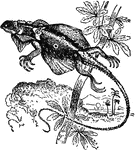
Flying Dragon
Draco volans, or the Flying Dragon, is a member of the genus of gliding lizards Draco. It can spread…
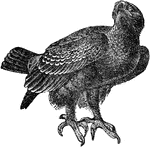
Screamer
The Screamers are a small family of birds, the Anhimidae.The three species occur only in South America,…

Evolution of Horse Foot
Generic development of the horse's foot. A, Foot of Eohippus; B, That of Orohippus; C, That of Hipparion;…
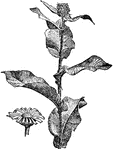
Elecampane
Elecampane, also called Horse-heal (Inula helenium) or Marchalan (in Welsh), is a perennial composite…

Shrew
Shrews are small, superficially mouse-like mammals of the family Soricidae. Although their external…

Sturgeon
Sturgeon is the common name used for some 26 species of fish in the family Acipenseridae, including…
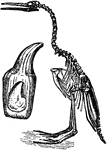
Hesperornis
Hesperornis is an extinct genus of flightless aquatic birds that lived during the Santonian to Campanian…
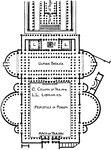
Forum and Basilica of Trajan
The forum was built on the order of Emperor Trajan with the spoils of war from the conquest of Dacia,…
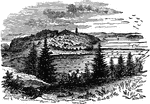
Stony Point
The Battle of Stony Point was a battle of the American Revolutionary War. Here is a view of Stony Point…

Zoea
An illustration of a Zoea of common shoe-crap in its second stage. r, Rostral spine; s, Dorsal spine;…
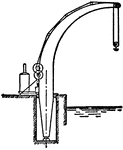
Fairbairn Steam Crane
The Fairbairn steam crane is a type of harbourside crane of an 'improved design', patented in 1850 by…

Crayfish
Crayfish, crawfish, or crawdads are freshwater crustaceans resembling small lobsters, to which they…

Zoea of Common Shore-Crab
An illustration of the zoea of a common-shore crab in its second stage. R, Rostral spine; S, Dorsal…
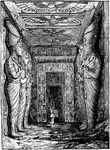
Entrance to the Great Temple at Abu Simbel
In 1959 an international donations campaign to save the monuments of Nubia began: the southernmost relics…
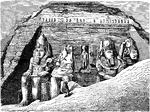
Entrance of the Great Temple at Abu Simbel
Four colossal 20 meter statues of the pharaoh with the double crown of Upper and Lower Egypt decorate…

Capital and Entablature from the Rock Tomb of Darius
The columns in the ruins of Persepolis are circular and slender, and have capitals and bases. The capital…
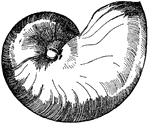
Nautilus Shell
The Nautilus Shell is a marine creature, it is shown in its natural form. It was usually placed on feet…

Antique Candelabrum Base
The Antique candelabrum base is made out of bronze. It is divided into three legs that are stretched…
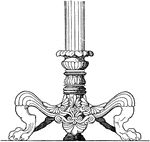
Antique Candelabrum Base
The Antique candelabrum base is made out of bronze. It is a design that is divided into three legs that…

Antique Candelabrum Base
The Antique candelabrum base is made out of bronze. It is a design that is divided into three legs that…

Antique Candelabrum Base
The Antique candelabrum base is made out of bronze. It is a design that is divided into three legs that…
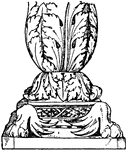
Roman Candelabrum Base
The Roman candelabrum base is encircled with leaves and lion's claws as feet.
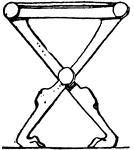
Antique Folding-Chair
The Antique Folding-Chair is remarkable for the having claw feet, usually turned inwards.
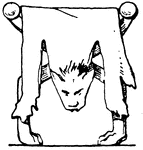
Antique, Folding-Chair
The Antique Folding-Chair is remarkable for the having claw feet, usually turned inwards.
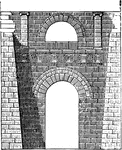
Etruscan Arch at Perugia
In these Etruscan buildings traces are to be found of the arch; as, for instance, in the Gate of Volterra…
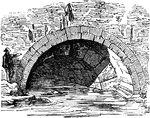
The Cloaca Maxima at Rome
In these Etruscan buildings traces are to be found of the arch; as, for instance, in the Gate of Volterra…
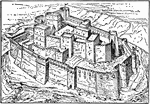
Krak des Chevaliers
Krak des Chevaliers was the headquarters of the Knights Hospitaller during the Crusades. It was expanded…
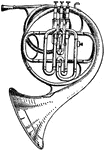
French Horn
The horn is a brass instrument consisting of about 12 feet (3.7 m) of tubing wrapped into a coil with…

Panathenaic amphorae
Panathenaic amphorae were the large ceramic vessels that contained the oil (some 10 gallons, and 60-70…

Giant Geyser of the Yellowstone
Giant Geyser of the Yellowstone. The eruptions of this geyser occur at intervals of 7 to 12 days, and…
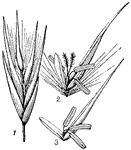
Reed
The common reed of the American and European reed swamps, growing from 5 to 12 feet high with leaves…

The Large Cane
The large cane, which forms the cane brakes of the southern states. It grows from 10 to 20 feet in height…

Cord Foot of Wood
"A pile of wood 1 ft. long, 4 ft. wide, and 4 ft. high, or 1/8 of a cord, is called a cord foot. Find…

Pulpit Rock Sections
Parallel vertical or columnar sections on the face of Pulpit Rock, near Colorado Springs, through identical…

Fin-Footed Coot Foot
"In ornithology, pinnatiped; having pinnate feet, the toes being separately furnished with flaps, as…

Wayland Valleys
Diagram illustrating the relation of the Dansville to the Wayland Valleys. The floor of the Wayland…
Gaine of Renaissance Sculpture
"Gaine. Renaissance sculpture. Maison de Pierre, Toulouse, France. In sculpture, the lower part of a…

Ostrich
"Struthio camelus, the Ostrich or "Camel-bird" of North Africa now extends from Barbary to Arabia, and…

Great Northern Diver
The Great Northern Diver, Colymbus glacialis, "...is black above, with belts of white spots making a…

Little Grebe
"Both sexes of the Little Grebe are mainly dusky brown or blacking grey above, and silvery white below,…
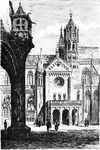
Catherdal of Freiburg
The original Freiburg Cathedral, was founded by Conrad, Duke of Zaeringen in the 12th Century. The present…
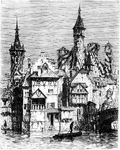
Castle of Unnoth
The Castle of Munnoth, sometimes called Unnoth, was erected in 1564, is a singular specimen of fortification…

Chamois
The chamois (Rupicapra rupicapra) is a goat-like animal, living at moderately high altitudes and are…

Big Strudel
The principal meaning of the German word strudel is whirlpool. Big Strudel, the vortex near Grein, 94…

Abby of Mölk
The Abbey of Mölk (Melk) (Stift Melk), an old Austrian Benedictine monastery is one of the richest…

Gannet
"The Gannet (S. bassana) has slate-grey wing-quills, purplish-grey bill, reddish feet and naked parts."…
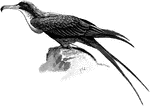
Frigate Bird
"The Frigate pr Mana-of-War-Bird... is met throughout the tropical regions, breeds in Laysan and has…
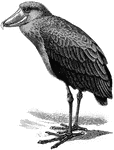
Shoebill
"Balaeniceps rex, the Shoebill, of the White Nile, has a short crest, and is brownish-grey with blackish…
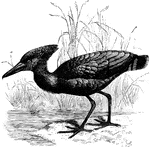
Hammerhead Standing Near Water
"Scopus umbretta, the Hammerhead, of Madagascar and a large part of the Ethiopian Range, is purplish-brown,…
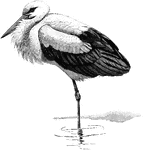
White Stork
"Ciconia ciconia, the White Stork, ...is white with black wings and orbits, red bill and feet." A. H.…

Spoonbill Standing on One Leg
"Platalea leucorodia, the Spoonbill, has white plumage, with bare lores, orbits, and throat, and a fine…
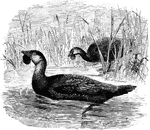
Two Musk Ducks Swimming between the Tall Grass in a Lake
Biziura lobata, (Musk Duck) of Tasmania and Australia -except the north-is brown with buff mottlings,…
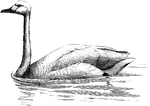
Bewick's Swan
"Cygnus bewicki, Buck's Swan, is white with black feet and bill, the basal half of the latter being…
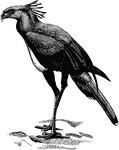
Secretary Bird
"Standing some four feet high on very long legs, this bird (Secretary Bird) gives the impression of…

Brush Turkey
"Catheturus lathami, the "Brush Turkey" of Eastern Australia, is blackish-brown with greyish under surface,…
